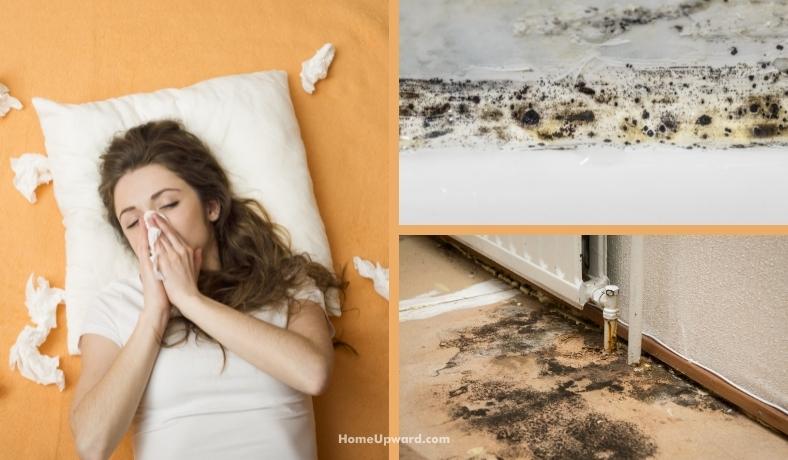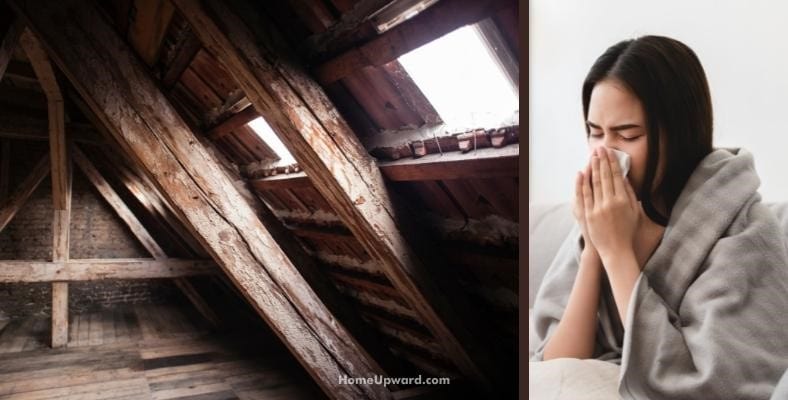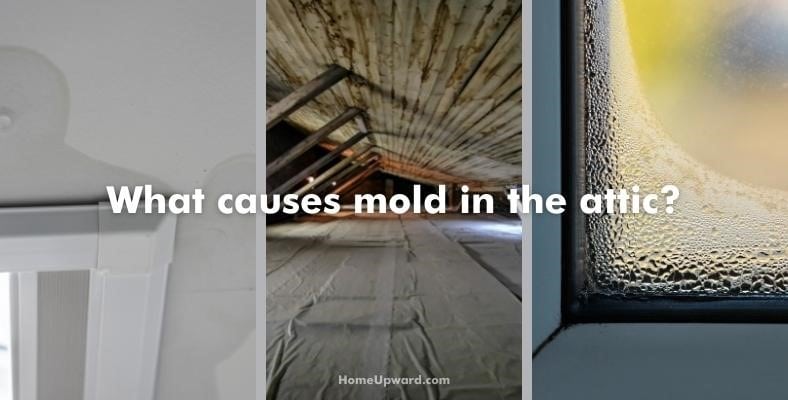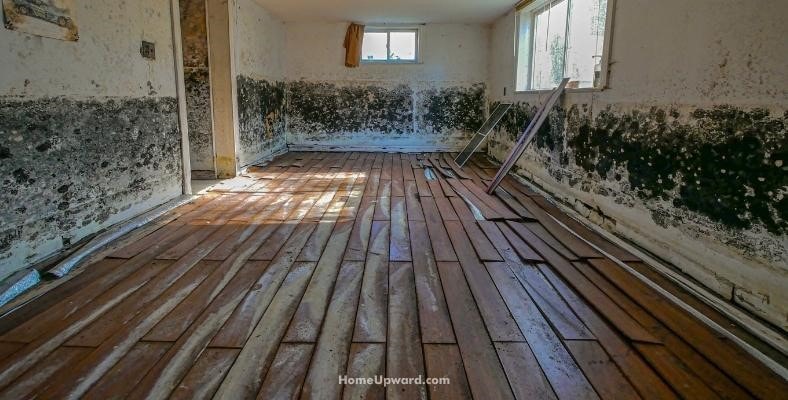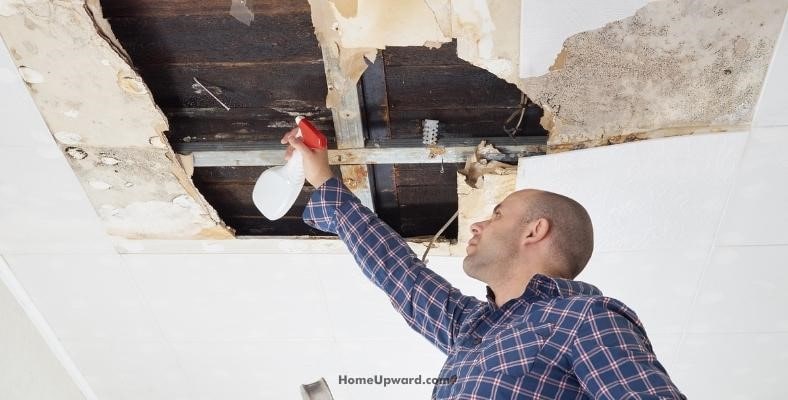Contents
Can Mold in an Attic Make You Sick?
Even if it’s hidden away in your attic, mold spores can make their way through your home or apartment and cause a number of symptoms and health problems. If you have a mold allergy you’re at even higher risk of illness from living with mold.
Always get rid of a mold problem as soon as possible.
What Causes Mold in the Attic (and How to Prevent It)
Mold grows in a warm, damp environment. Attics are especially good at fostering mold growth because condensation accumulates there. When an attic is warmer it makes the perfect environment for mold to start growing.
As many of us already know attics can definitely be bad about retaining heat as well as moisture, too.
- If you see water damage you should check for mold. Fixing any source of water damage is a good step in preventing mold in the future. A home inspection can tell you where any other issues are or if there’s more mold you aren’t aware of.
- Ventilation is one of the best things you can do for preventing the accumulation of moisture which encourages mold and mildew to grow.
- Check for roof leaks and patch them correctly – roof leaks are another source of water and moisture. Leaks can come from a range of places including holes in the roof, damaged flashing around chimneys and vents, or gaps around attic access doors or windows.
- Check for and deal with condensation. A primary cause of moisture, attic condensation happens when warm air from your living space rises and meets a cool surface – for example, the underside of the roof deck or the top of an uninsulated attic floor. This temperature difference causes water vapor to condense on a surface.
If you think leaks are causing your attic moisture problem it’s a good idea to have a professional inspection done and have repairs made as you need. In the meantime, you can use spray foam to cover up any water or air leaks.
In some cases, attic moisture can be controlled by installing a vapor barrier on the warm side of attic insulation. A barrier helps prevent warm air from rising into the attic and condensation forming on cold surfaces.
You can also consider installing a dehumidifier in your attic space. They’re good for removing excess moisture from the air and will reduce the risk of mold and mildew growth. The drawback to a dehumidifier is that they require power and because they collect the water you’ll either have to empty the collection tank or run a drain hose to the outside.
What does mold in an attic smell like?
Mold in an attic has a musty smell. There’ll also be a noticeable difference between the smell of air downstairs versus up in your attic. It could also be an earthy smell or even a stuffy smell.
The smell could be anything from faint to overwhelming; really it depends on the ventilation and how bad the mold growth problem is.
Can You Live With Mold in Your Attic?
Mold will likely cause health issues for anyone if they live with it long-term. You can certainly live with it but eventually it’ll become more and more of a problem and an even bigger risk. Symptoms aches and pains, coughing, irritated breathing passageways, and even headaches will usually begin to appear sooner later.
That’s because unless the conditions change mold will continue to grow, producing more and more airborne spores that you’ll be exposed to. It can cause respiratory illness along with a weakened immune system.
Unless you know whether you’re allergic to mold, there’s really not a good way to know how big a health risk comes with trying to live with it.
For toxic mold like the black mold you need to get rid of it sooner rather than later. Getting mold remediation done as early as possible is always the safest bet. Using an air purifier will only help deal with the by-product spores and won’t treat the source.
There’s no getting around the need to deal with the mold directly at some point.
How Do You Know if Mold is Making You Sick?
It can be hard to pinpoint the cause of an illness especially when its cause is hiding away in your attic. If you suspect there may be mold that is making you sick you can get a mold inspection.
Some mold symptoms include:
- Allergic reactions: Fever-type symptoms (sneezing, runny nose, red eyes, skin rash, etc)
- Asthma attacks triggered
- Eye, skin, nose, throat, and lung irritation
- Excessive coughing or difficulty breathing; shortness of breath or tight chest
- Headaches, various pains, and more
More serious and extreme consequences can include:
- Infections of the skin or mucous membranes
- Fatigue
- Nervous disorders
- Vomiting, loss of appetite, weight loss
- Chronic bronchitis
- Memory loss, “brain fog”, bleeding lungs, blindness, and brain damage
How long does it take to get sick from mold exposure?
Mold exposure reaction times vary and it depends on how much you’re exposed to generally speaking. They can build over time or they can happen quickly. If you’re allergic to mold just one exposure can cause an allergic reaction or symptoms similar to other allergy symptoms like trouble breathing and itchy eyes.
Black mold exposure is even worse as this toxic mold is known to cause severe health issues related to your respiratory system.
How Do You Get Rid of Mold in Your Attic?
White mold and black mold will likely blend in with their surroundings the best but they can show up the same way a yellow mold would depending on what they grow on.
Getting rid of mold really isn’t all that hard, fortunately. While paying a professional to kill mold is one option, you can do it yourself by using some common household items:
How to deal with mold in your attic
Safety First
- First, use decent safety gear. Mold can spread in many ways including from your clothes to other clothing. Wear something you can discard or wash immediately.
- Seal off and ventilate the room as well as you can. Mold spores spread in the air, too. This method of spreading is also why you should wear a particle mask. This heavy-duty mask will protect you from breathing in spores in the air.
- Sealing the room off includes closing vents and turning off anything that circulates air around the house like your air-conditioner.
- Bleach is best at killing mold, but if the area doesn’t have good ventilation you could end up breathing in bleach fumes which can be dangerous (or painful to your eyes, throat, nose, etc. at the least).
Steps for cleaning mold
- Mix bleach and water with a ratio of one cup of bleach per gallon of water. You can transfer it to a spray bottle for easier use. Spray the stain and let it sit.
- On hard surfaces you can scrub the mold stain with a scrub brush or something similar. Remember that if the mold is rooted too deep you may have to undertake the drywall replacement process.
- If there’s anything like carpet or bedding near the mold be sure to have a look at it. You may need to throw it away if it’s contaminated. There’s also a chance you’ll need to replace your attic insulation.
- Take measures to prevent mold growth in the future. Fix the problem at its root. If a pipe is leaky and causing mold growth, fix the leak. You can even use a dehumidifier to prevent the environment from becoming moist enough for mold growth.
How much does it cost to remove mold from the attic?
Expect to pay somewhere between $1,300 and $3,00 (or about $13.00 to $28.00 per square) foot for mold remediation, with large mold problems, with $2,347 being the national average. People with homes having minor mold problems average somewhere around $458 for mold treatment while the average cost for more extensive work can reach as much as $6,000+.
It’s often cheaper (and faster) to take care of small jobs yourself using bleach and water as I mentioned above – if you’re not able to afford professional mold remediation or if you’re fairly confident drywall or wood isn’t permanently ruined.
Attic mold removal can be more expensive if it’s harder to access and maneuver around than in a space like a bathroom. Sometimes it costs more as well because of the amount of mold that can grow unnoticed. The more mold there is, the longer the job will take.
If drywall or wood has heavy mold growth and needs to be removed for replacement or access to harder-to-reach areas during treatment that can increase the price as well. Things like leaky pipes or concrete may need repair in some cases which means the cost will go up and up as well as need the price for replacement materials, too.

